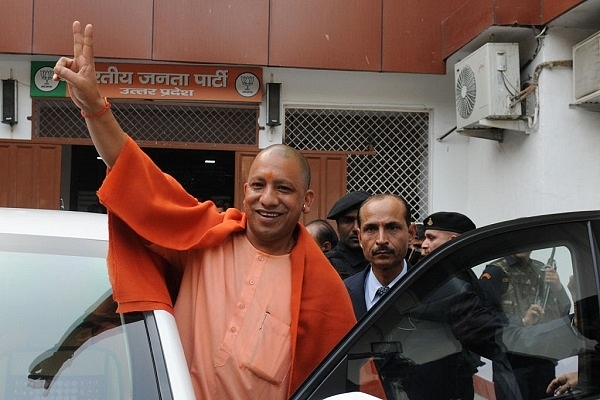Context
Explained In Numbers: How BJP Won Rampur And Azamgarh Byelections

Uttar Pradesh CM Yogi Adityanath. (Subhankar Chakraborty/Hindustan Times via Getty Images)
BJP has surprisingly won byelections to Rampur and Azamgarh parliamentary constituencies. Here's what worked for it:
The shift: Both were prestigious strongholds of the SP for over a decade. But BJP's victories represent fundamental changes in the electoral mindset and have numerous socio-political implications.
Rampur: Swarajya predicted last week, the BJP will not be able to win this seat unless it attracts at least 6-7 per cent of the vote directly from the SP.
The BJP has managed to do exactly that. Its vote share increased by 9 per cent from 2019, of which, 7 per cent came from the SP.
The contest was intensely bipolar as 98 per cent of the votes cast were shared between the BJP and the SP.
BJP received 52 per cent of the votes, while SP 46 per cent. This mimics the 2019 general elections, when bipolarity was 96 per cent.
What has changed: The BSP, which used to have a decent presence in Rampur, and even won the seat in 2004, has been wiped out.
While all Dalit votes have shifted to the BJP, the Muslim vote is becoming increasingly irrelevant in western UP.
The Congress has withered to such an extent in western UP that it didn’t even care to contest the Rampur elections.
The BJP increased its vote share by a whopping 15 per cent from March 2022 assembly elections. This is in line with historical data that the BJP always does better in general elections than in assembly elections.
Azamgarh: The BJP won by just one per cent, and with just 34 per cent of the popular vote, in a tight, three-way contest.
The BJP’s vote share actually went down marginally from what it got in 2019, but it won because the BSP split the Muslim vote.
With the BSP receiving 29 per cent of the votes, it took back from the SP, all the votes it gave in 2019, when the SP and BSP were briefly allied.
BJP's improving performance: BJP never once in the past four elections – of 2014, 2017, 2019, and March 2022 – had won a single assembly seat or Lok Sabha segment here.
From that to winning, albeit in a three-way contest, is progress. The BJP has improved its vote share by 4 per cent since the March 2022 assembly elections.
Also, BJP performs better in general elections than in assembly elections, even in areas like Azamgarh where it is relatively less successful.
Bottomline: While it is simply too early to extrapolate these results to 2024, they do, however, indicate, at least qualitatively, the nature of the potential BJP sweep in UP.
Support Swarajya's 50 Ground Reports Project & Sponsor A Story
Every general election Swarajya does a 50 ground reports project.
Aimed only at serious readers and those who appreciate the nuances of political undercurrents, the project provides a sense of India's electoral landscape. As you know, these reports are produced after considerable investment of travel, time and effort on the ground.
This time too we've kicked off the project in style and have covered over 30 constituencies already. If you're someone who appreciates such work and have enjoyed our coverage please consider sponsoring a ground report for just Rs 2999 to Rs 19,999 - it goes a long way in helping us produce more quality reportage.
You can also back this project by becoming a subscriber for as little as Rs 999 - so do click on this links and choose a plan that suits you and back us.
Click below to contribute.
Latest